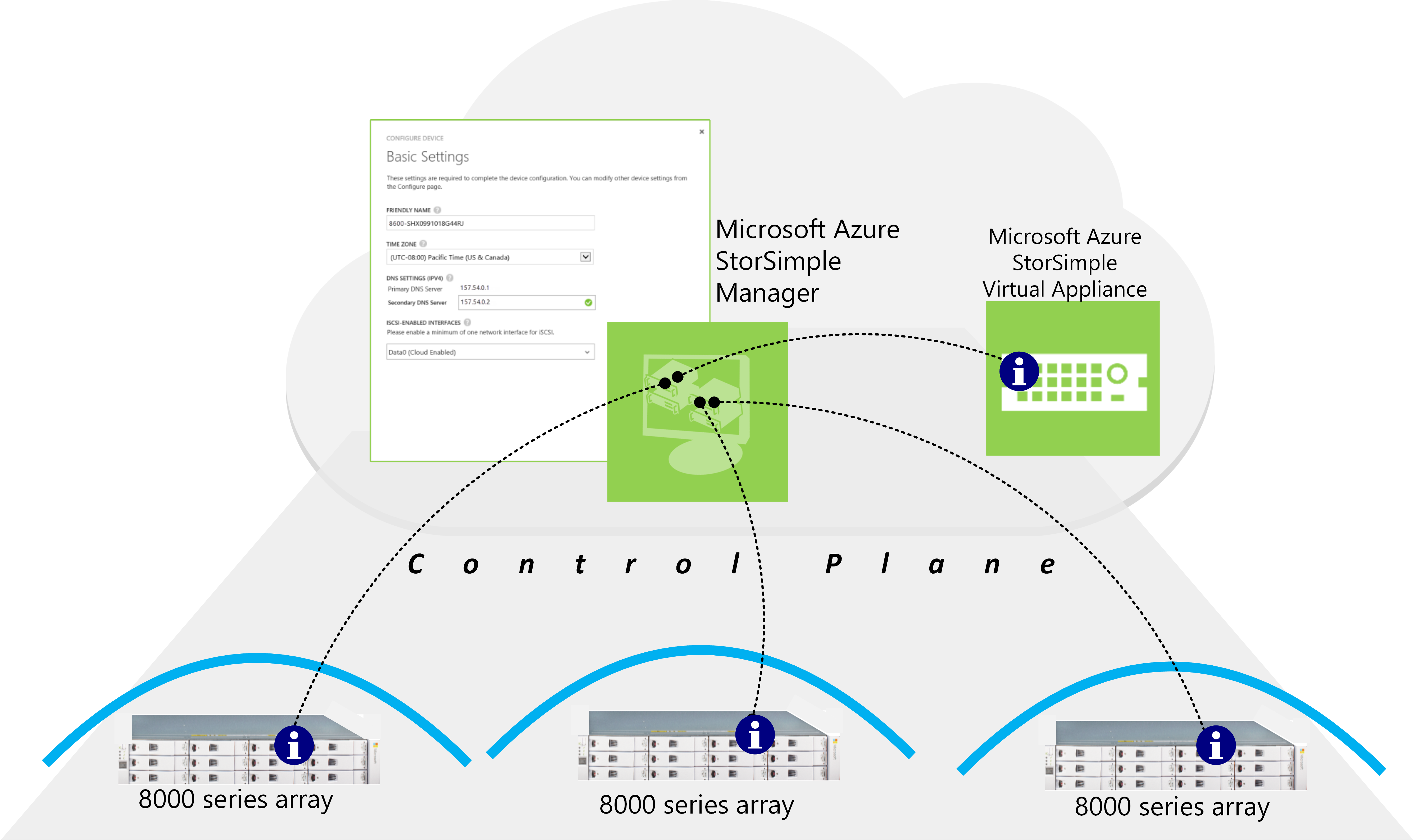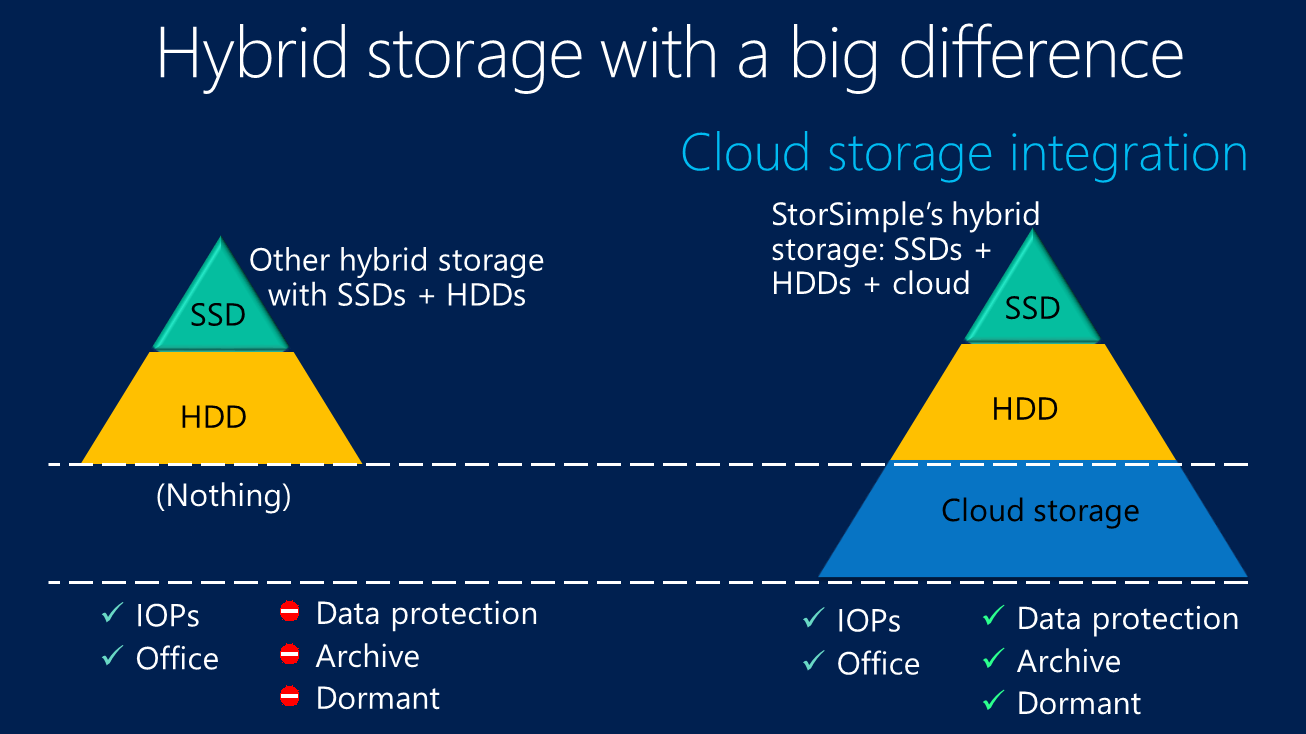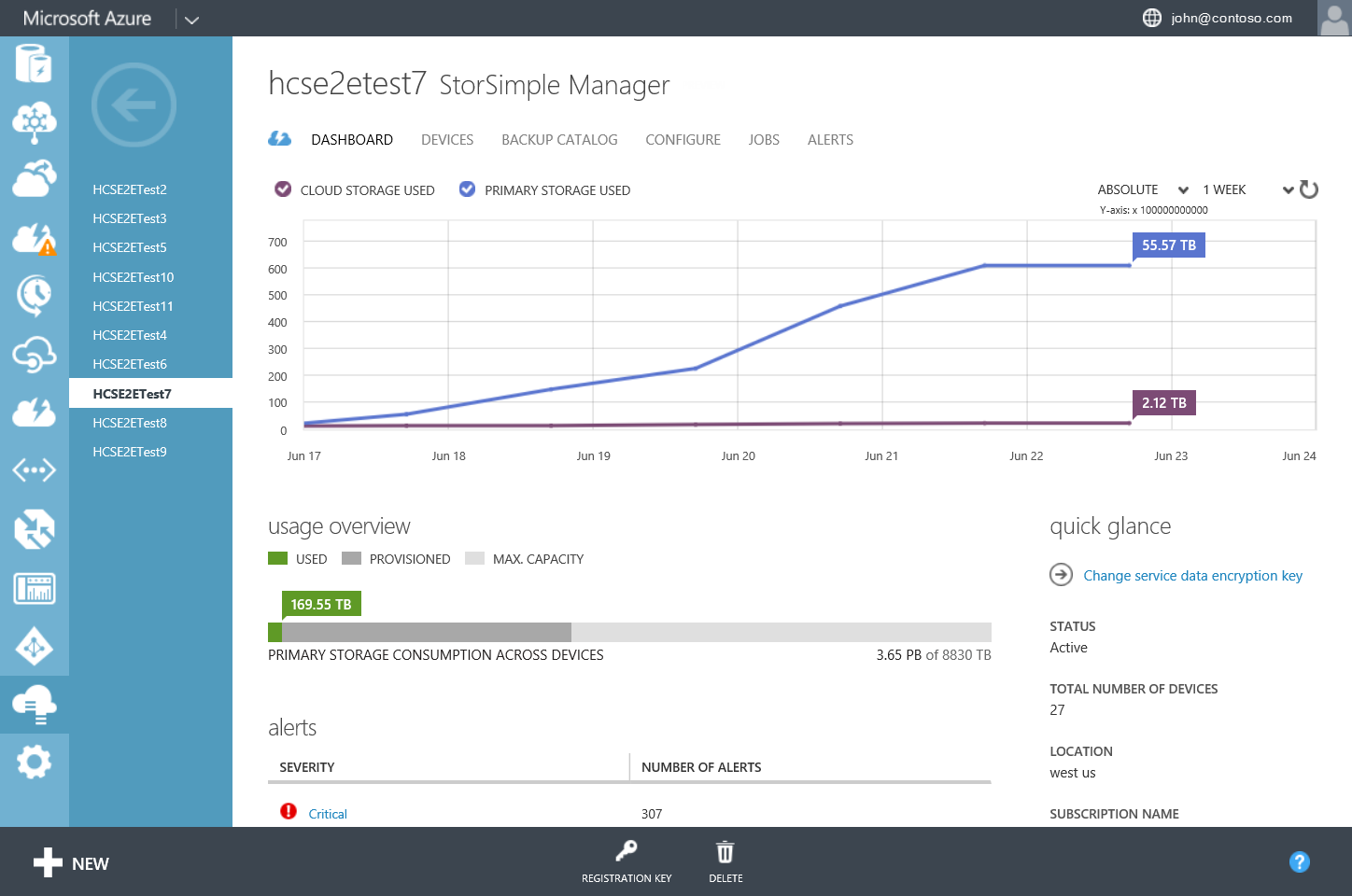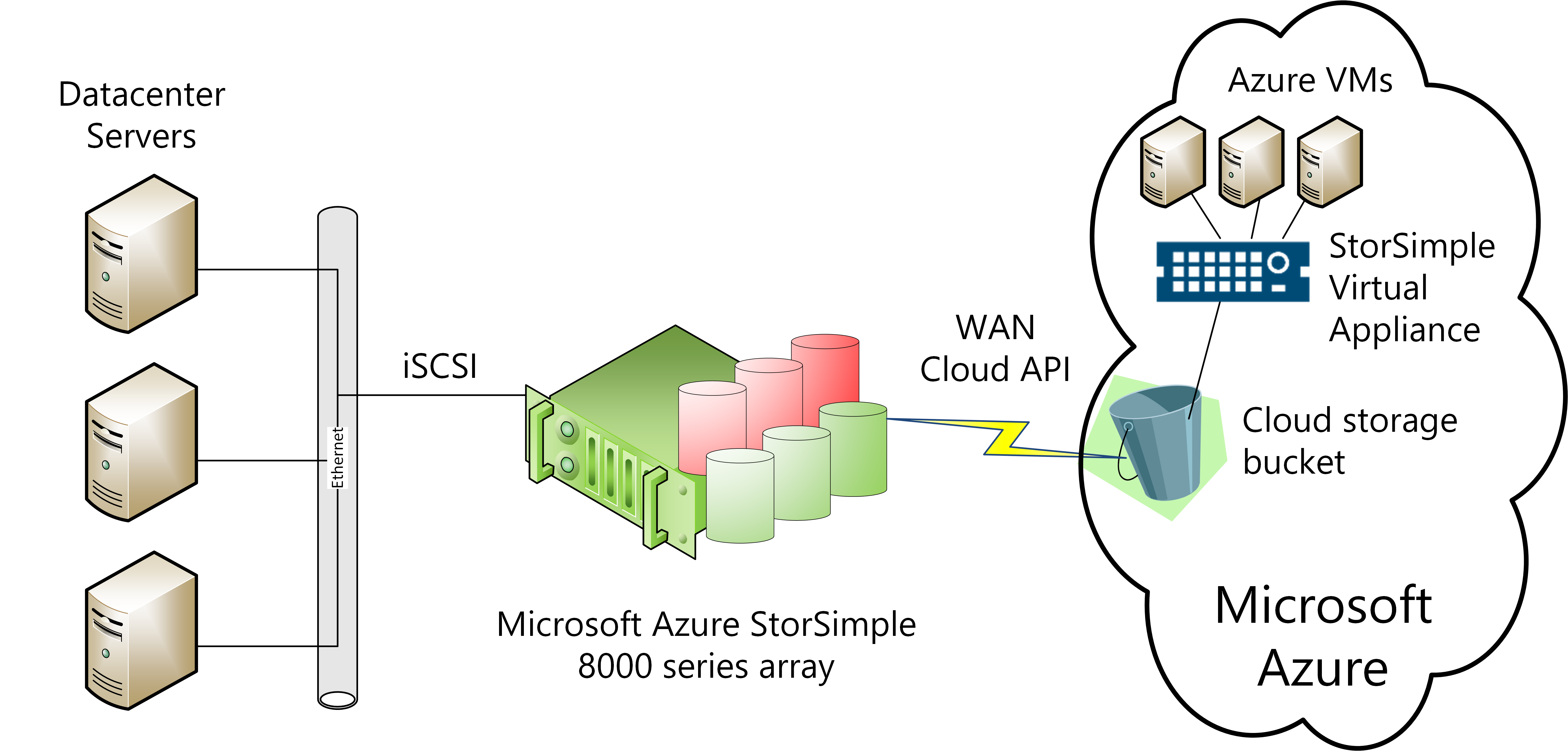Shifting up from infrastructure management to data-driven innovation
Woot! It's a huge day for us at StorSimple/Microsoft! We are announcing our new Microsoft Azure StorSimple 8000 series arrays, the StorSimple 8100 & 8600, that integrate with two new Azure services, the Microsoft Azure StorSimple Manager and the Microsoft Azure StorSimple Virtual Appliance. The 8100 and 8600 are hybrid storage arrays in every sense of the word with automated data tiering between SSDs and HDDs - but with an additional cloud storage tier with the lowest online storage cost and cloud-scaling capacity. If you are tired of buying and installing storage and rebalancing workloads all the time, you really need to check out StorSimple. The same is true for managing data protection, because off-site data protection is completely automated with StorSimple. And if you can't test DR because it's too disruptive and takes too long, you need to look into non-disruptive, thin recovery with StorSimple. Then there is managing double digit data growth - that too is something StorSimple solutions excel at. Check out what our customers have to say about this revolutionary storage technology by looking at our customer case studies.
If hybrid cloud storage had existed years ago, we wouldn't have needed the complex storage and data management technologies and processes that we have today. When you integrate off-site cloud storage with local enterprise storage many of the difficult storage management problems disappear. A comparison of non-cloud hybrid storage and StorSimple hybrid storage is summarized in the graphic below. The addition of an integrated cloud tier off-site gives the StorSimple the advantages of automated data protection, archiving and online capacity for dormant, inactive files.
The big shift to a data-centric ROI
StorSimple has been reducing the cost of storage for customers for several years. With the introduction today of Microsoft Azure StorSimple solutions, a new vision of hybrid cloud storage is taking shape - one where cloud services and data mobility is front and center. The new economic equation of Microsoft Azure StorSimple features expanded access to enterprise data by cloud-resident applications as well as the greater management efficiencies customers appreciate.
The new StorSimple Manager is an Azure management portal that controls all functions of all StorSimple 8000 series arrays across the enterprise. It provides a single, consolidated management point that uses the Internet as a control plane to configure all parameters of StorSimple 8000 series arrays and for displaying up-to-the-minute status information in a comprehensive dashboard. There is never a need to visit a remote site to manage removable data protection media or upgrade storage capacity because data protection and capacity expansion are done automatically by the array using cloud storage. Data management tasks, such as configuring data retention polices is accomplished from the StorSimple Manager for all sites, enabling centralized compliance with corporate standards. The StorSimple Manager's reach is powerful and a great example of how hybrid management concepts bring not only real cost savings, but more accurate control of infrastructure equipment and processes.
Overcoming location limitations to leverage data
The location where data is stored is typically determined by the performance requirements of the most latency-sensitive applications. This is certainly understandable, but it also restricts data from being effectively leveraged by systems and applications in other locations such as cloud datacenters. Discussions of using enterprise data in the cloud have often been in the context of cloud bursting, but there are many other scenarios where the StorSimple Virtual Appliance will provide access to enterprise data in Azure.
Data mobility with the 8000 series arrays and the Virtual Appliance starts with the data that has been uploaded to Azure by StorSimple cloud snapshots. Cloud snapshots are like snapshots in other storage products, except they are stored off-site in the cloud without the capacity limitations that can compromise data retention with on-premises disk-based backup systems. Cloud snapshot jobs not only effectively backup data on the StorSimple array, they also synchronize the volume on-premises with the virtual volume in Azure. Cloud snapshots contain deduped data that requires less storage capacity in the cloud, but needs to be rehydrated to be used again. The StorSimple Virtual Appliance rehydrates virtual volumes in Azure, making them available to VMs and applications there. This allows customers to use the data they have in Azure for the following scenarios:
- Disaster recovery
- Dev/test
- Discovery/search
- Application migration
There are two ways to transition virtual volumes in Azure for use by VMs there: failover and cloning. Both processes are managed quickly and easily from within the StorSimple Manager, which identifies the volume that will be transitioned and the host (or VM) that will then be granted access to it. Failover takes a virtual volume in the cloud and directly assigns it for use by a VM in order to continue processing the same application that had been using it previously. For instance, a disaster that halts operations on-premises could be recovered from by failing over effected volumes to VMs in the cloud. If, or when, it is desired to move the volume back on-premises at a later time, another "inverse" failover operation can be performed to re-assign the virtual volume to a host (which can be a guest VM) on-premises.
Cloning is similar to failover, except that a second, identical virtual volume is created that is assigned to a VM in Azure or a host/guest VM on-premises. The creation of clone volumes from source virtual volumes allows IT teams to setup temporary VMs and applications in an IaaS "sandbox" for specific objectives such as searching historical data or for application experiments using real, enterprise data. Cloned volumes are not kept in sync with source volumes, but there are many applications that don't need real-time data as much as they need real data. For instance, data analytics and discovery applications can be run against day-old data and identify the exact same trends or find the exact same content as it would if running against live data. Using cloned volumes in the cloud with temporary systems and networks is much cheaper and less disruptive than trying to do the same thing on-premises.
IT teams will be happy to know that the environment for accessing data in Azure using the Virtual Appliance models on-premises SAN connections. The Virtual Appliance connects to Azure VMs using a virtual iSCSI Ethernet network and the same platform volume and storage management tools (such as Windows Disk Management) and iSCSI initiators that are used on-premises. That means many of the same system management skills used on-premises are used in Azure to do the same things there.
We are looking forward to seeing how our customers use the Virtual Appliance in the months and years to come. There is a lot of potential to do great things together to build storage that is not only cheaper to own and operate, but also unlocks more of the value inherent in corporate data.
Check out our new 8000 series solutions at https://www.microsoft.com/storsimple



